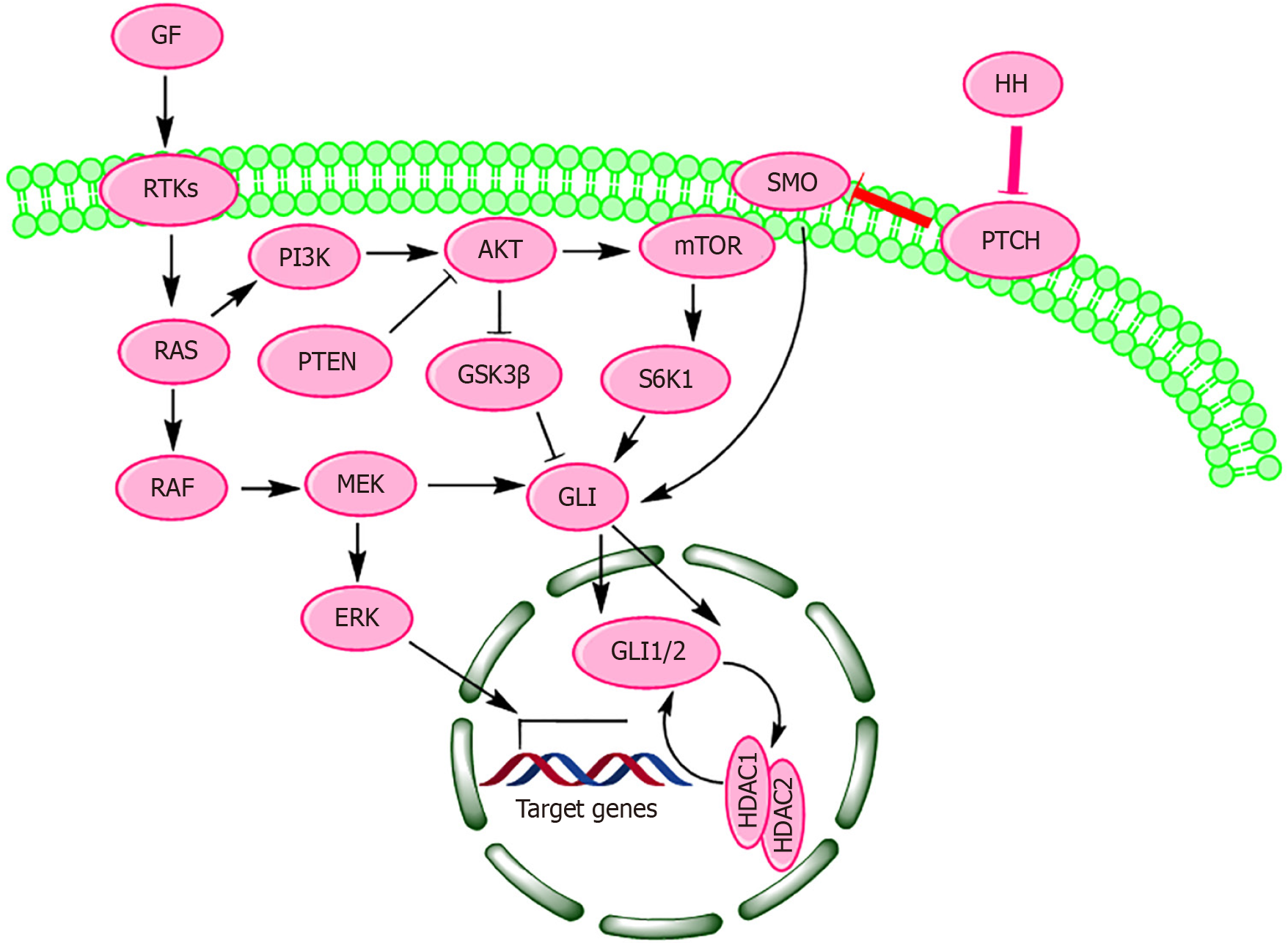Copyright
©The Author(s) 2025.
World J Clin Oncol. Oct 24, 2025; 16(10): 105117
Published online Oct 24, 2025. doi: 10.5306/wjco.v16.i10.105117
Published online Oct 24, 2025. doi: 10.5306/wjco.v16.i10.105117
Figure 1 The constitutively active rat sarcoma virsus oncogene-Raf proto-oncogene, serine/threonine kinase-mitogen-activated protein kinase kinase-extracellular signal-regulated kinase signaling pathway induces hedgehog signaling by promoting the nuclear translocation of glioma-associated oncogene homolog 1 and glioma-associated oncogene homolog 2 transcription factors.
In the absence of the hedgehog (HH) ligand, patched inhibits smoothened (SMO). Upon HH ligand binding, patched-mediated repression of SMO is lifted, allowing SMO activation. Activated SMO triggers a signaling cascade that promotes the nuclear translocation of full-length, activated GLI proteins and which induce transcription of HH target genes. Different kinases modulate the translocation and activation of GLI1, GLI2, and GLI3 in distinct ways. GF: Growth factor; RTKs: Receptor tyrosine kinase; RAS: Rat sarcoma virsus oncogene; RAF: Raf proto-oncogene, serine/threonine kinase; PI3K: Phosphoinositide 3-kinases; PTEN: Phosphatase and tensin homolog; MEK: Mitogen-activated protein kinase kinase; ERK: Extracellular signal-regulated kinase; AKT: AKT serine/threonine kinase; GSK3β: Glycogen synthase kinase 3 beta; GLI: Glioma-associated oncogene homolog; HDAC: Histone deacetylase; S6K1: Ribosomal protein S6 kinase beta-1; mTOR: Mammalian target of rapamycin; SMO: Smoothened; PTCH: Patched; HH: Hedgehog.
- Citation: Rather RA. Oncogenic B-Raf proto-oncogene, serine/threonine kinase-mediated hedgehog signalling in the pathogenesis and targeted therapy of melanoma. World J Clin Oncol 2025; 16(10): 105117
- URL: https://www.wjgnet.com/2218-4333/full/v16/i10/105117.htm
- DOI: https://dx.doi.org/10.5306/wjco.v16.i10.105117













